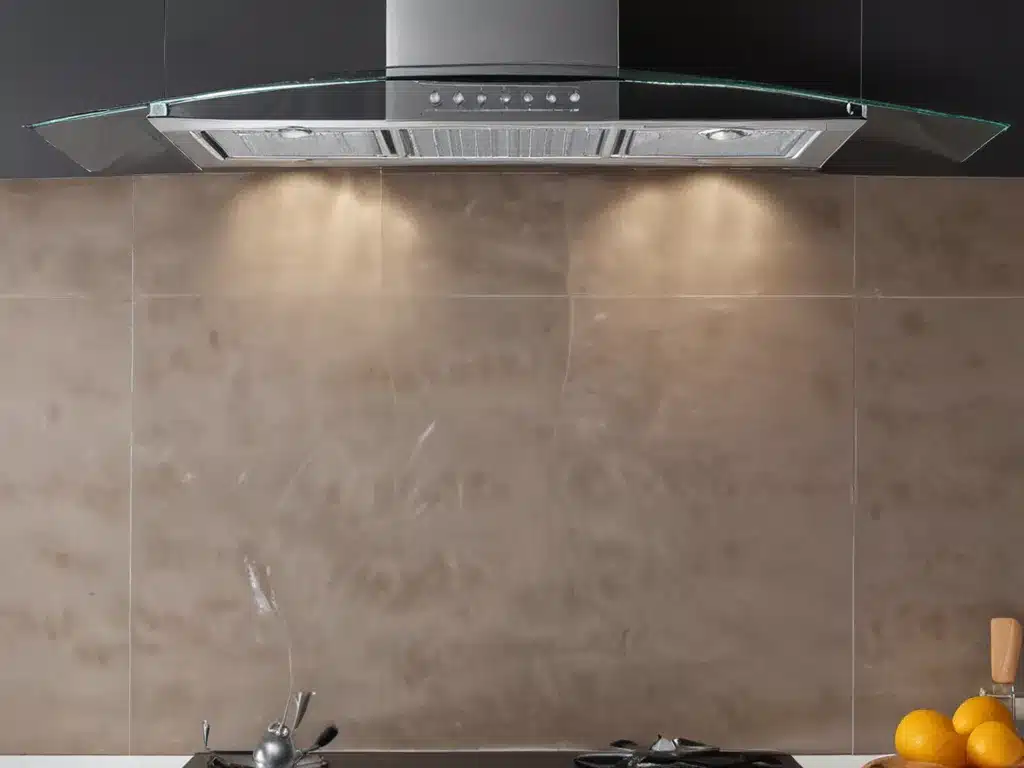Why Splashes Happen
Splashes inside your cooker hood are caused by oil, grease, and food particles that get ejected up into the hood while cooking. As the oil heats up, it can bubble and pop, sending droplets upward. Frying foods like bacon or stir-frying vegetables are common culprits. Even boiling liquids can cause bubbles and splatters. Over time, these sticky splashes accumulate and turn into a greasy film that’s unpleasant to look at and difficult to clean.
The main causes of splashes are:
- Frying foods at high heat
- Cooking foods with natural oils and fats
- Boiling liquids that bubble up
- Not using a lid on pots and pans
Splashes happen more frequently when ingredients are wet or have a high moisture content. The water content causes the oil to bubble and pop.
Preventing Splashes
The key is preventing splashes before they happen. Here are some tips to minimize splatters and keep your cooker hood clean:
Use Lids
Cover pots and pans when cooking. Lids contain splashes and collect condensation that otherwise drips down. Use glass lids to monitor food.
Lower the Heat
High heat causes more bubbles and splattering. Turn down the heat and cook at a gentler boil or simmer. Fry foods at medium heat rather than high heat.
Blot Ingredients
Before frying foods, blot them with paper towels to remove excess moisture from the surface. Drier foods absorb less oil and won’t pop and splatter.
Use Oil With a High Smoke Point
Oils like avocado, peanut, and grapeseed oil have high smoke points. They withstand higher heat before smoking and splashing.
Avoid Overcrowding
Don’t overload pots and pans. Allow enough room for steam to escape between ingredients. Overcrowded cooking leads to more bubbles and splashes.
Wipe Down Nearby Surfaces
After cooking, immediately wipe down the stove, counters, and backsplashes. This prevents oil residues from sticking and becoming harder to remove later.
Cleaning Greasy Splashes
Even if you minimize splatters, some may still end up on your cooker hood. Here are some tips for cleaning:
-
Wipe down the hood regularly with hot soapy water. For stainless steel or painted surfaces, a degreasing cleanser helps dissolve oil.
-
For glass cooker hoods, use a grease-cutting spray cleaner. Apply it, let it soak for 5 minutes, and wipe clean with a soft cloth. Avoid abrasive scouring pads which can scratch the glass.
-
For heavier buildup, mix a solution of warm water and distilled white vinegar. Dip a cloth in the solution and lay it directly on the greasy areas. Let it soak for 15 minutes before scrubbing lightly. The vinegar will help dissolve the grease.
-
For stubborn greasy patches, make a paste with baking soda and water. Gently scrub with a soft brush or sponge. The abrasiveness of the baking soda loosens caked-on splatters.
-
Clean metal filters, grates, and vents regularly according to the manufacturer’s instructions. Soak them in hot, soapy water if needed. This maintains airflow and suction.
Preventing Future Splashes
Adjusting your cooking techniques is the best way to keep splashes at bay in the long run:
-
Install a high-quality range hood with adequate CFM for your cooking needs. More powerful airflow captures more splatters.
-
Only fry foods like meats occasionally, not daily. Opt for lower-fat cooking methods like baking, grilling, or roasting.
-
For stir-fries, consider using a splatter screen over the pan to contain pops and sizzles.
-
When boiling pasta,sauces, or soups, turn down the heat before it comes to a full rolling boil.
-
Keep the interior baffle filters clean so they trap airborne grease before it sticks to surfaces.
With some simple precautions, it is possible to keep your cooker hood splatter-free for good! Proper techniques prevent annoying cleanups down the road. A little care goes a long way to maintaining a spotless cooker hood.







